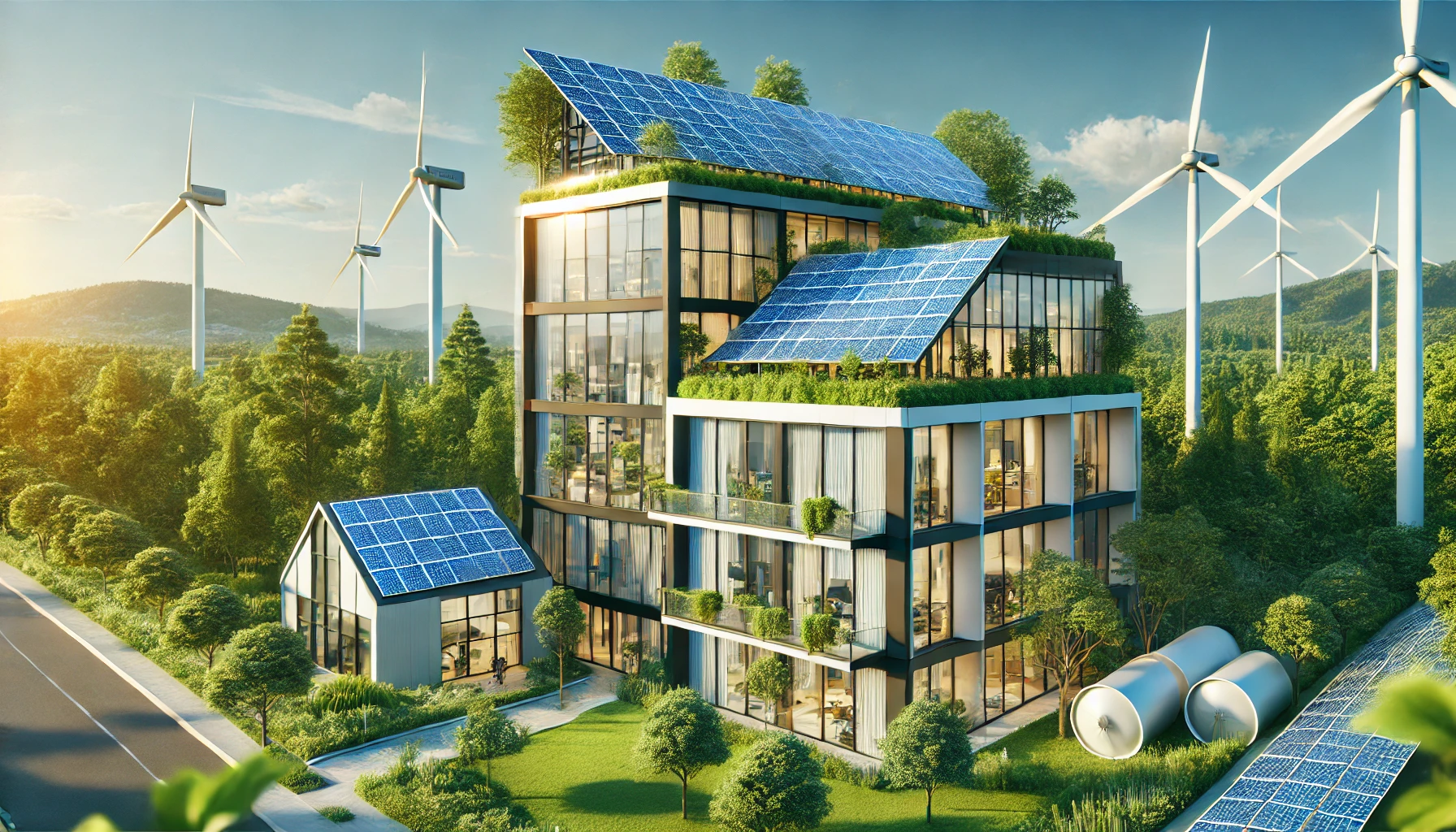In a world where environmental concerns and the quest for sustainable living are at the forefront of global discourse, the concept of Net Zero Energy Buildings (NZEBs) is gaining significant traction. These buildings are designed to produce as much energy as they consume, leading to a net zero energy balance over the course of a year. Achieving energy independence through NZEBs is not only a visionary step towards sustainability but also a practical solution to reducing our carbon footprint and energy costs.
What is a Net Zero Energy Building?
A Net Zero Energy Building (NZEB) is an energy-efficient building that generates as much energy as it consumes annually. This is achieved through a combination of energy-efficient design, renewable energy sources, and advanced technologies. The goal is to minimize energy consumption and meet the remaining demand with clean, renewable energy sources such as solar, wind, or geothermal energy.
The Importance of NZEBs
Net Zero Energy Buildings play a crucial role in the transition towards a sustainable future. Here are some key benefits:
- Environmental Impact: NZEBs significantly reduce greenhouse gas emissions, contributing to the fight against climate change.
- Energy Savings: By generating their own energy, these buildings reduce reliance on fossil fuels and lower energy bills.
- Resilience: NZEBs are less affected by energy price fluctuations and grid failures, providing energy security.
- Health and Comfort: These buildings often feature superior indoor air quality and thermal comfort, improving the well-being of occupants.
Key Components of NZEBs
To achieve net zero energy status, buildings must integrate several key components:
- Energy-Efficient Design: This includes high-performance insulation, windows, and doors, as well as optimized building orientation and shading to reduce energy demand.
- Renewable Energy Systems: Solar panels, wind turbines, and geothermal systems are common renewable energy sources used in NZEBs.
- Advanced Technologies: Smart building technologies, energy management systems, and efficient HVAC systems help to minimize energy consumption.
- Behavioral Adjustments: Educating occupants on energy-saving practices and encouraging sustainable behaviors are essential for maintaining net zero energy balance.
Designing for Net Zero
Designing an NZEB requires a holistic approach that considers all aspects of the building’s lifecycle. This includes:
Site Selection and Orientation
Choosing the right location and orienting the building to maximize natural light and solar gain can significantly reduce energy needs. Passive solar design and natural ventilation strategies can further enhance energy efficiency.
High-Performance Building Envelope
A well-insulated and airtight building envelope is critical for minimizing heat loss and gain. This includes using high-performance windows and doors, as well as proper insulation in walls, roofs, and floors.
Efficient HVAC Systems
Heating, ventilation, and air conditioning (HVAC) systems are major energy consumers in buildings. Energy-efficient HVAC systems, coupled with smart thermostats and zoning controls, can drastically reduce energy usage.
Renewable Energy Integration
Installing renewable energy systems, such as solar panels or wind turbines, allows buildings to generate their own clean energy. Energy storage solutions, like batteries, can store excess energy for later use, ensuring a consistent energy supply.
Case Studies of Successful NZEBs
The Edge, Amsterdam
The Edge in Amsterdam is a prime example of an NZEB. This office building uses a combination of solar panels, rainwater harvesting, and advanced building management systems to achieve energy independence. The building’s design maximizes natural light, and its innovative use of technology ensures efficient energy use and a comfortable working environment.
Bullitt Center, Seattle
The Bullitt Center in Seattle is another notable NZEB. This building incorporates solar energy, geothermal heating and cooling, and rainwater collection to meet its energy needs. It also features composting toilets and a green roof, making it one of the most sustainable commercial buildings in the world.
Challenges and Solutions
While the benefits of NZEBs are clear, there are also challenges to overcome:
- Initial Costs: The upfront investment for NZEBs can be higher due to the cost of advanced technologies and renewable energy systems. However, these costs are often offset by long-term energy savings and incentives.
- Technological Integration: Integrating various technologies and systems can be complex. A well-coordinated design and construction process, involving all stakeholders, is essential for success.
- Behavioral Changes: Occupants must be educated and motivated to adopt energy-saving behaviors. Regular training and engagement can help achieve this.
Net Zero Energy Buildings (NZEBs) are the future of sustainable architecture. These buildings are designed to produce as much energy as they consume, significantly reducing carbon emissions and energy costs. By integrating renewable energy sources such as solar panels and wind turbines, NZEBs achieve energy independence and contribute to a greener planet. The transition to NZEBs is not without challenges, but the benefits of reduced energy bills, enhanced comfort, and environmental impact make them a worthwhile investment. Explore how NZEBs can transform our approach to building design and operation, paving the way for a sustainable future.
Tips for Achieving Net Zero Energy
Achieving net zero energy in buildings involves a combination of strategies and best practices:
- Conduct Energy Audits: Regular energy audits can identify areas for improvement and track progress towards net zero energy goals.
- Optimize Building Orientation: Design buildings to maximize natural light and solar gain, reducing the need for artificial lighting and heating.
- Use High-Performance Materials: Invest in high-performance insulation, windows, and doors to minimize energy loss.
- Incorporate Renewable Energy Systems: Install solar panels, wind turbines, or geothermal systems to generate clean energy on-site.
- Implement Smart Technologies: Utilize smart building technologies and energy management systems to optimize energy use.
- Educate Occupants: Encourage energy-saving behaviors among occupants through training and awareness programs.
Conclusion
Net Zero Energy Buildings represent a significant step forward in the pursuit of sustainable living and energy independence. By combining energy-efficient design, renewable energy sources, and advanced technologies, NZEBs offer a practical solution to reducing our carbon footprint and achieving long-term energy savings. While challenges remain, the benefits of NZEBs far outweigh the obstacles, making them an essential component of a sustainable future.
As we continue to innovate and improve our approach to building design and operation, the vision of achieving net zero energy in all buildings becomes increasingly attainable. By embracing these principles, we can create a healthier, more sustainable world for future generations.

